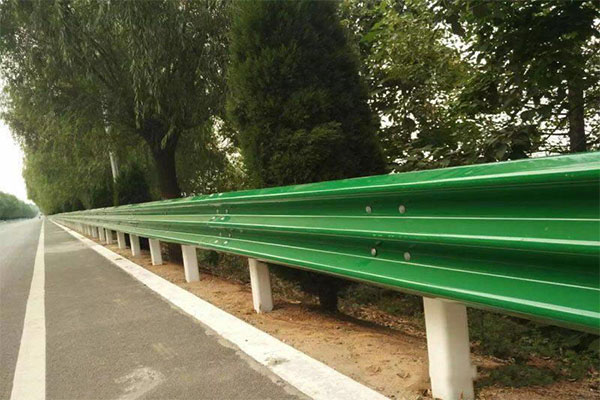Galvanized Highway Guardrail: Everything You Need to Know
Highway guardrails play a crucial role in maintaining road safety by preventing vehicles from veering off the road or colliding with barriers. Among the various types available, galvanized highway guardrails have gained widespread popularity due to their exceptional durability and corrosion resistance.
What Are Galvanized Highway Guardrails?
Galvanized highway guardrails are steel barriers designed to prevent vehicular accidents and minimize the severity of collisions. These guardrails are made of high-quality carbon steel and coated with a layer of zinc through the galvanization process. This coating provides a protective barrier against corrosion, ensuring the guardrails withstand harsh environmental conditions, including rain, snow, and UV radiation.

Advantages of Galvanized Highway Guardrails
- Superior Durability: Galvanized highway guardrails are known for their exceptional durability, making them a reliable choice for long-term road safety. The galvanization process creates a bond between the zinc coating and the steel, forming a robust protective layer that resists corrosion, rust, and degradation over time.
- Cost-Effectiveness: Investing in galvanized highway guardrails proves to be cost-effective in the long run. The durability of galvanized steel means less frequent replacements and repairs, reducing maintenance costs for transportation authorities and road management agencies.
- Enhanced Road Safety: Galvanized guardrails provide a critical safety barrier for vehicles on highways and roads. By redirecting vehicles back onto the road and preventing them from colliding with obstacles or crossing into opposing traffic lanes, galvanized guardrails significantly reduce the severity of accidents and potential injuries.
- Corrosion Resistance: The zinc coating on galvanized highway guardrails acts as a sacrificial layer, protecting the underlying steel from corrosion caused by moisture, salt, and other environmental factors. This corrosion resistance ensures the guardrails maintain their structural integrity, even in harsh weather conditions.
Installation Process
Installing galvanized highway guardrails requires expertise and adherence to specific guidelines to ensure optimal performance and safety. The installation process typically involves the following steps:
- Site Assessment: Engineers evaluate the road conditions, such as the curvature, gradient, and traffic volume, to determine the most suitable placement of the guardrails.
- Preparation: The installation team prepares the area by clearing debris, leveling the ground, and marking the positions for post placement.
- Post Placement: Steel posts are securely embedded into the ground at designated intervals, maintaining the recommended height and alignment.
- Beam Installation: Guardrail beams are connected to the posts using appropriate hardware, ensuring a sturdy and continuous barrier.
- Terminal Ends: Terminal ends are installed to anchor the guardrail system and minimize the risk of vehicle penetration.
Maintenance and Inspection
To ensure the optimal performance of galvanized highway guardrails, regular maintenance, and inspection are essential. Here are some key considerations:
- Routine Inspections: Trained personnel should conduct regular inspections to identify any signs of damage, such as dents, deformations, or loose connections. Inspections should also include an assessment of the guardrail’s overall integrity and the condition of its zinc coating.
- Cleaning: Periodic cleaning of the guardrails using water and mild detergents can help remove debris, dirt, and other particles that may hinder their effectiveness.
- Repairs and Replacements: Any damaged or compromised sections of the guardrail system should be repaired or replaced promptly to ensure uninterrupted road safety.
- Surface Treatment: In case the zinc coating shows signs of wear or corrosion, appropriate surface treatment methods, such as zinc-rich paint, can be applied to provide additional protection.
Galvanized Guardrails and Road Safety
The presence of galvanized highway guardrails plays a significant role in enhancing road safety. Here’s how they contribute to accident prevention and mitigating collision impact:
- Vehicle Restraint: Galvanized guardrails are designed to redirect vehicles back onto the road, preventing them from hitting obstacles or crossing over into opposing traffic lanes.
- Energy Absorption: The flexible nature of galvanized guardrails allows them to absorb and dissipate the energy generated during a collision, reducing the impact on the vehicle occupants and minimizing the risk of severe injuries.
- Visibility and Warning: The reflective properties of guardrail posts and beams enhance visibility, especially during low-light conditions. This helps drivers navigate safely and warns them about upcoming curves, intersections, or hazards.
Conclusion
Galvanized highway guardrails are an integral component of road safety, offering exceptional durability, corrosion resistance, and cost-effectiveness. By providing a protective barrier and redirecting vehicles during collisions, these guardrails play a crucial role in mitigating the severity of accidents and enhancing overall road safety. Regular maintenance and inspection ensure their longevity and optimal performance. As we continue to prioritize safe and reliable road infrastructure, galvanized highway guardrails will remain a key solution in safeguarding lives on our highways and roads.
If you are looking for Galvanized Highway Guardrail for your project, you can contact us directly for more information.

